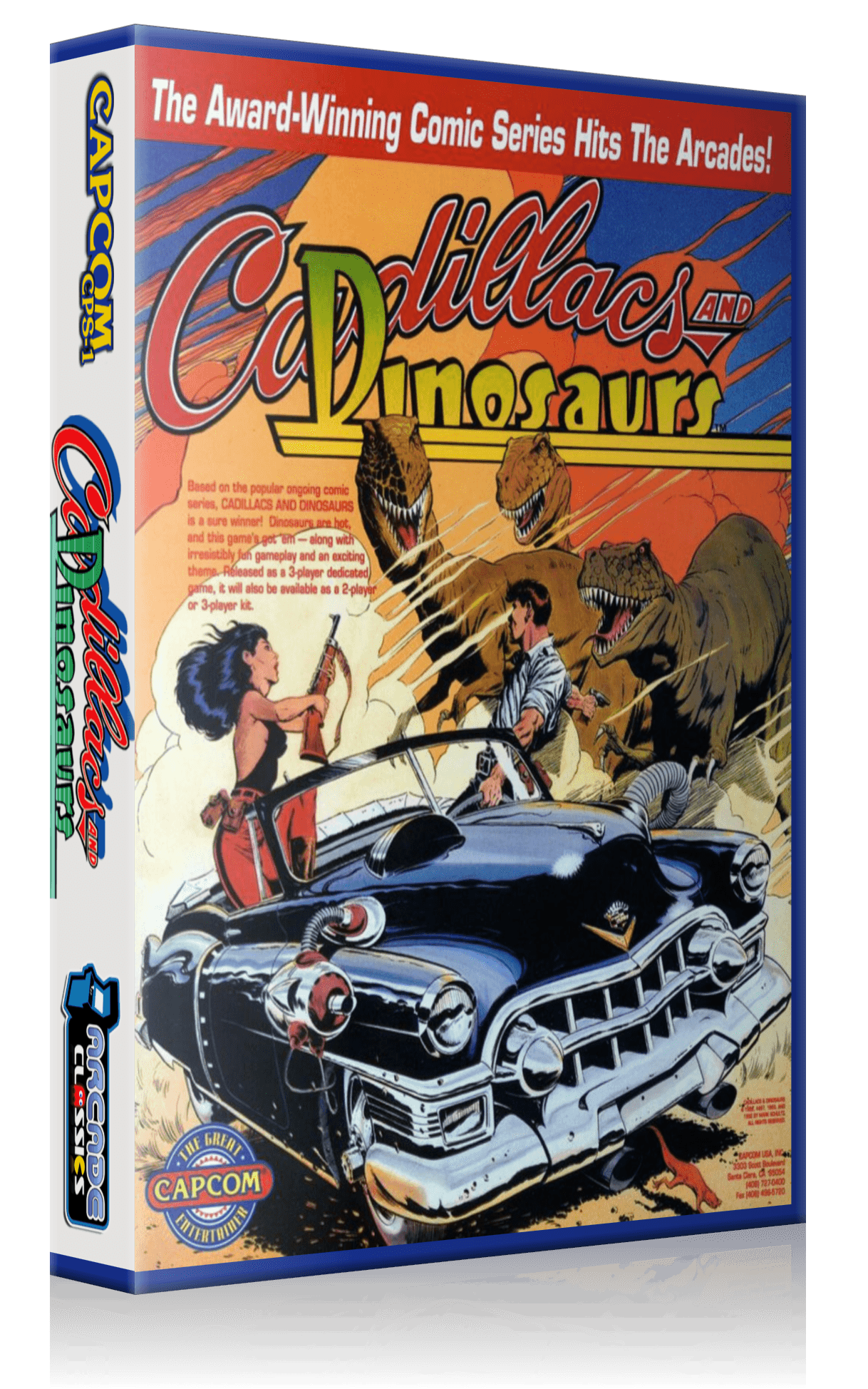

"So we put color and brightness in the eyes and gave him very white teeth. I put myself in the position of a kid and what would be scary: the eyes and the teeth. I wanted him to be very dark and disappear in darkness. "The eyes, the texture of the skin, the claws, the way he crawls. "The most important elements in the design of the Indoraptor were taken from real animals," he said. Bayona and the design team first looked at animal references, from dinosaurs, to snakes, to cats and dogs. When it came to designing the Indoraptor, J.A. However, Jurassic World: Dominion (2022) went back to the Univisium 2.00:1 aspect ratio of the first Jurassic World film. Miller (1971), The Deer Hunter (1978) and Steven Spielberg's The Sugarland Express (1974) and Close Encounters of the Third Kind (1977), as inspiration for the widescreen look of the movie. He even cited the movies of cinematographer Vilmos Zsigmond, who shot McCabe & Mrs.


#Cadillacs and dinosaurs game over walter movie#
Bayona decided to shoot this movie in 2.39:1 as he wanted "to do a movie that cannot be seen on a plane", and because the movie deals with a colossal population of dinosaurs in the same frame. When Jurassic World (2015) was made, director of photography John Schwartzman and director Colin Trevorrow were aiming to shoot in 2.39:1, despite executive producer Steven Spielberg's preference for 1.85:1, so the Univisium 2.00:1 aspect ratio was used. The first three Jurassic Park movies were shot in 1.85:1 to better accommodate the dinosaurs in the same frame. The first three Jurassic Park movies were shot in 1.85:1, while Jurassic World (2015) was shot in Univisium 2.00:1. That is a complete one hundred eighty-degree shift of what happens forty-five minutes later in the movie where everyone is running and being eaten."įirst Jurassic Park movie to be shot digitally, and in widescreen 2.39:1, which J.A. That will happen in every movie in some way or another. That moment of fascination of beauty, brilliance, life is a part of the brand. One of the signifying elements of the brand is that moment of seeing the dinosaurs for the first time at the beginning of the movie. So, we are transported and there's this kind of joy and fear thing that happens. We don't really see it happening, in our heart of hearts, but it feels so weird. The idea that today's technology could bring about such a juxtaposition is fascinating, and terrifying, to people. There's nothing in the history of the Earth that we can compare it to, that we can juxtapose in the same way. Dinosaurs are always going to be wonderfully fascinating to us, so it combines that childhood fascination and the threat of interacting with dinosaurs in modern day. When asked what was it about the Jurassic Park franchise that it endured for so long, BD Wong exclaims, "The childhood fantasy. And we could because the first movie did alright." "We definitely learned that if we were able to afford more animatronics, we would use them. We spent a lot of time just working on the physics of how light transmits through the eye and focuses." "We learned a lot from the last movie," said "Jurassic World" Director-turned-"Falling Kingdom"- Producer Colin Trevorrow at the event Tuesday. "So there's a lot of expression built into Blue's eyes. It's also very true for the dinosaurs," Wuttke added. "You're trying to sort of connect the dinosaur with things that you understand as a human." "A lot of the acting comes through the eyes. It's exactly like a dog," Vickery said at the premiere. You look at the way Blue cocks her head and looks up at you. That's by design, according to Visual Effects Supervisors David Vickery and Alex Wuttke. It was just the most realistic thing that I'd ever worked with, and it felt like I was working with a real animal, I think it cost like four Bentleys to make, or something crazy like that." Moviegoers will likely be impressed by the clawed creature, and also feel affection toward her like they would their own dog. "It would sweat, its eyes would dilate if hit by light, it had pulsing veins, it felt like reptile skin. (It's) really, really remarkable." Daniella Pineda, who plays veterinarian Zia in the new movie, said she was blown away by how lifelike her reptilian scene partner was. "Ten or twelve people operate this half-a-million-dollar puppet. "The animatronic dinosaur Blue is just really breathtaking puppetry, artistry," said Pratt.

"She's always going to be my favorite." Though the raptors in the last movie were largely portrayed by men in suits, in this movie, beloved theropod Blue is mostly played by an animatronic. The entire crew, including Chris Pratt, spoke fondly of Blue the velociraptor, "Blue's still my favorite," Pratt said on the carpet outside of Walt Disney Concert Hall.


 0 kommentar(er)
0 kommentar(er)
